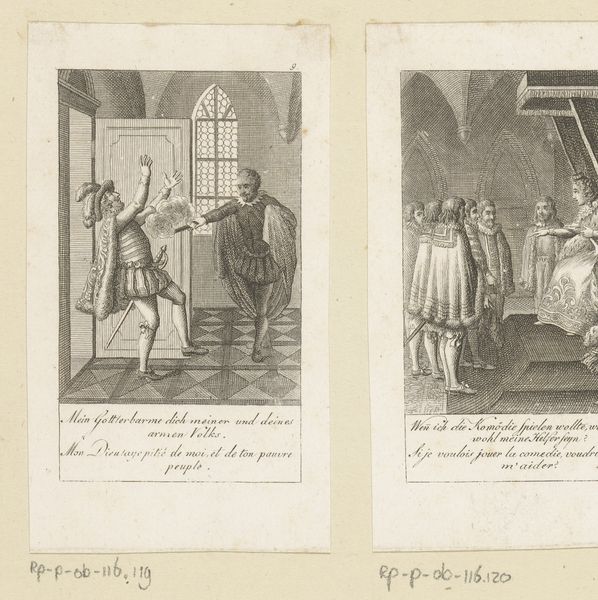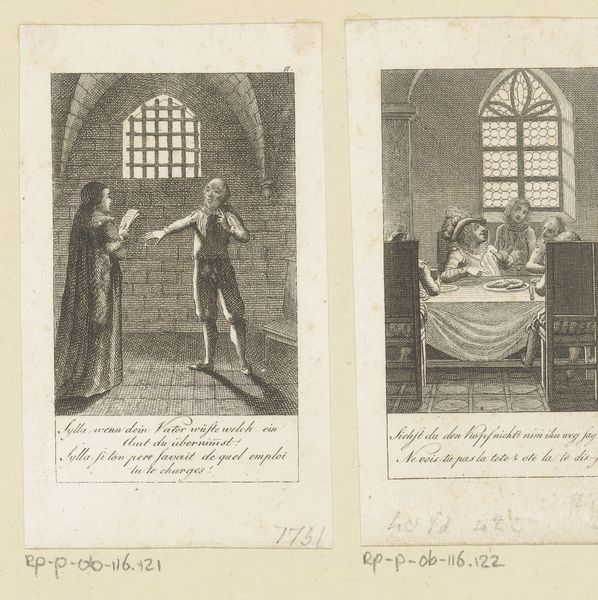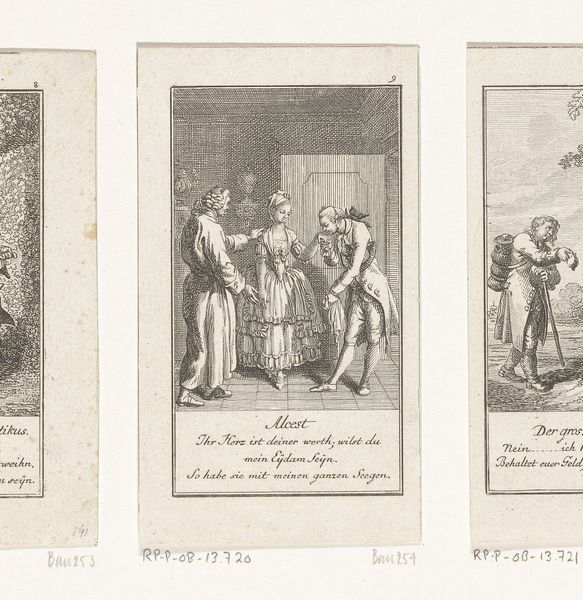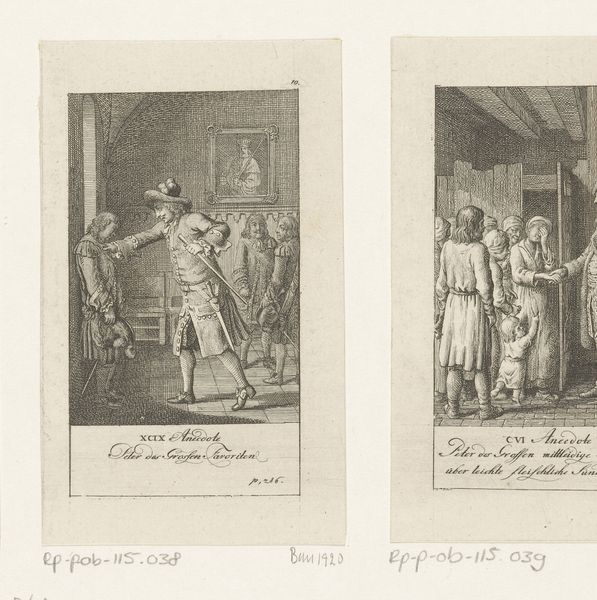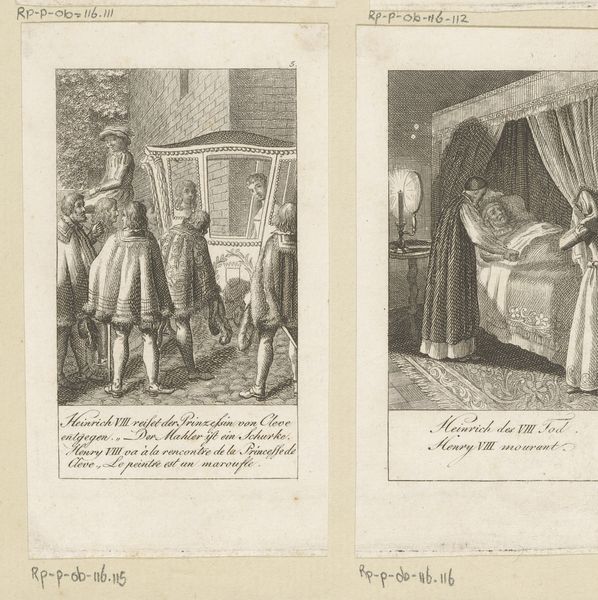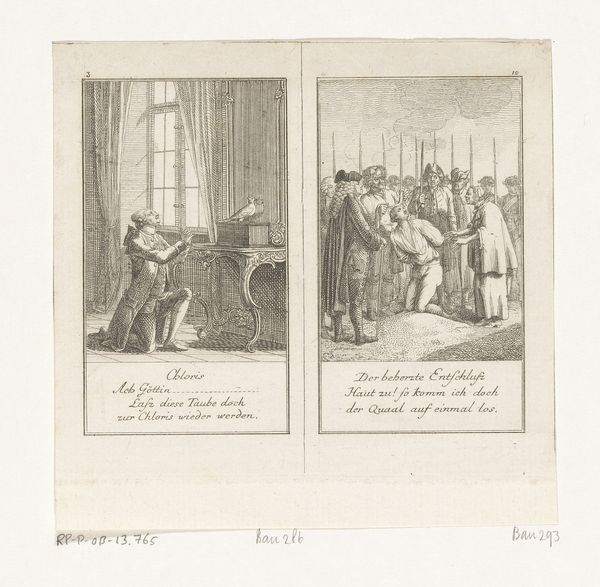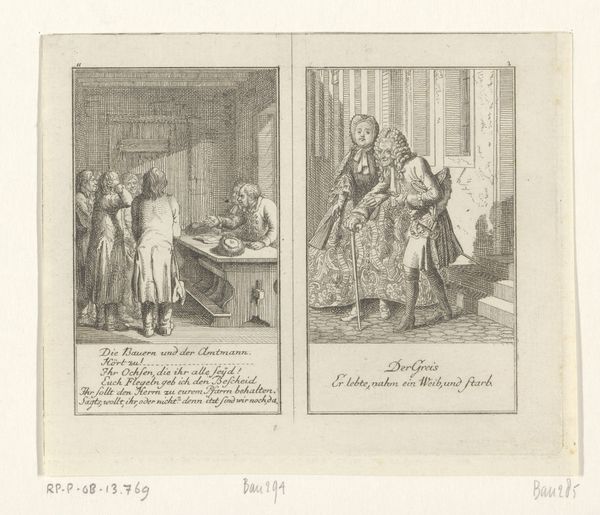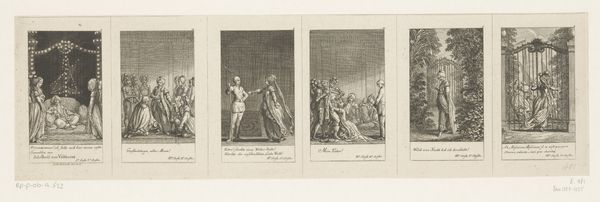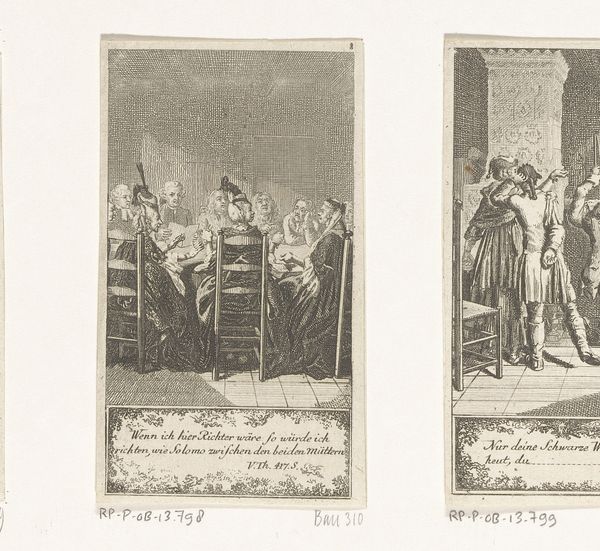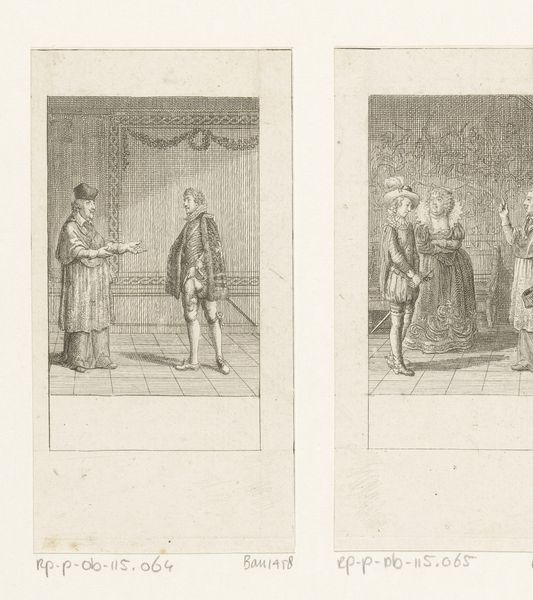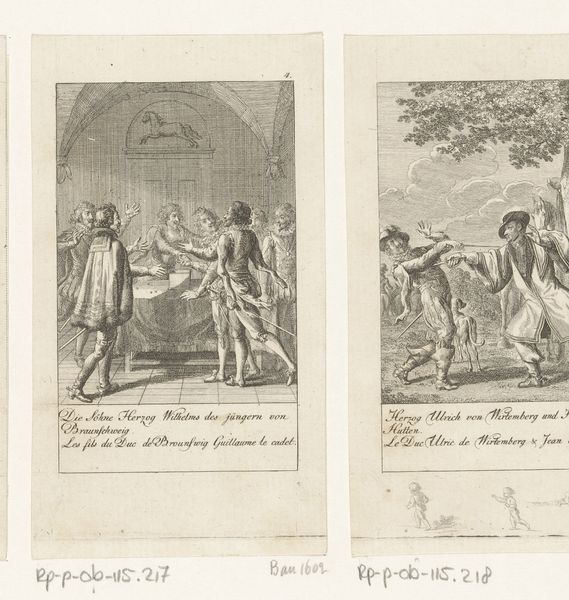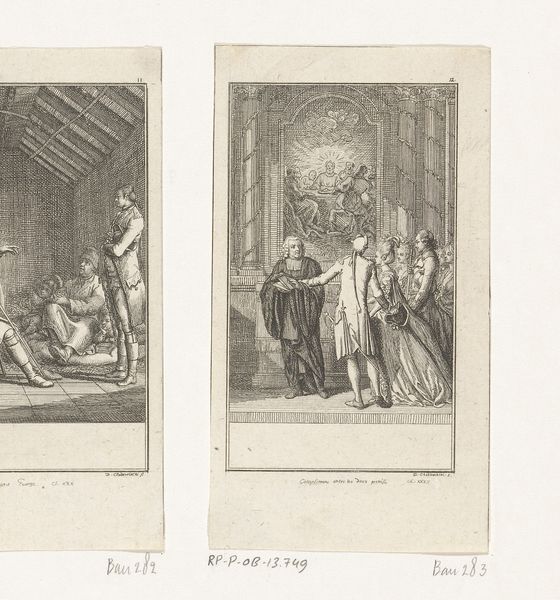
Voorstelling uit de geschiedenis van de Nederlandse stadhouders 1796
0:00
0:00
christiangottliebgeyser
Rijksmuseum
print, etching, engraving
#
portrait
#
narrative-art
# print
#
etching
#
history-painting
#
engraving
Dimensions: height 107 mm, width 62 mm
Copyright: Rijks Museum: Open Domain
Editor: This is "Voorstelling uit de geschiedenis van de Nederlandse stadhouders," a print by Christian Gottlieb Geyser from 1796, currently housed in the Rijksmuseum. The artwork, etched and engraved, shows two distinct scenes, side-by-side, creating a sort of diptych. It feels very theatrical, with the figures arranged like actors on a stage. What can you tell me about it? Curator: The theatrical quality is key; the symbolic imagery and poses reflect not just historical events but how those events were meant to be *understood.* Note how in the left scene, the figure is elevated, literally enthroned; it echoes the imagery of power, dominance, and the expectation of deference. Do you see any other recurring visual symbols in both scenes? Editor: Well, the figure on the right seems confined, trapped almost, indicated by the barred window in the background. Perhaps it shows a loss of power, contrasting with the scene on the left? Curator: Precisely! The barred window is an enduring symbol of confinement and oppression, contrasting starkly with the open, almost performative, setting of the first scene. The visual language carries deep psychological weight, doesn’t it? These scenes employ familiar tropes – power versus captivity – which viewers then, and even now, can readily grasp. Consider how the clothing styles themselves contribute to this narrative. How do those speak to the theme? Editor: The attire seems quite formal and elaborate on the left, almost regal. The other one on the right looks quite ragged, simple; this might further emphasize that point about a reduction of status? Curator: Exactly. Think about how clothing in portraits can signal power, wealth, and social standing. Now, look at the gestures of each person and what they are conveying to others in these scenes. Gestures form a symbolic language of their own that viewers over centuries have come to recognize as signaling an exchange of words and meaning. Do these visual signals provide new understandings to your original interpretations of the piece? Editor: Definitely! I now perceive that Geyser used universal symbolism like gestures and clothing as much as literal depictions of history, imbuing this print with more resonance than just a record of past events. Thanks for enlightening me. Curator: My pleasure; recognizing these symbols unveils layers of meaning in artwork. It reveals connections across time and culture that inform history painting as well as portraiture.
Comments
No comments
Be the first to comment and join the conversation on the ultimate creative platform.
